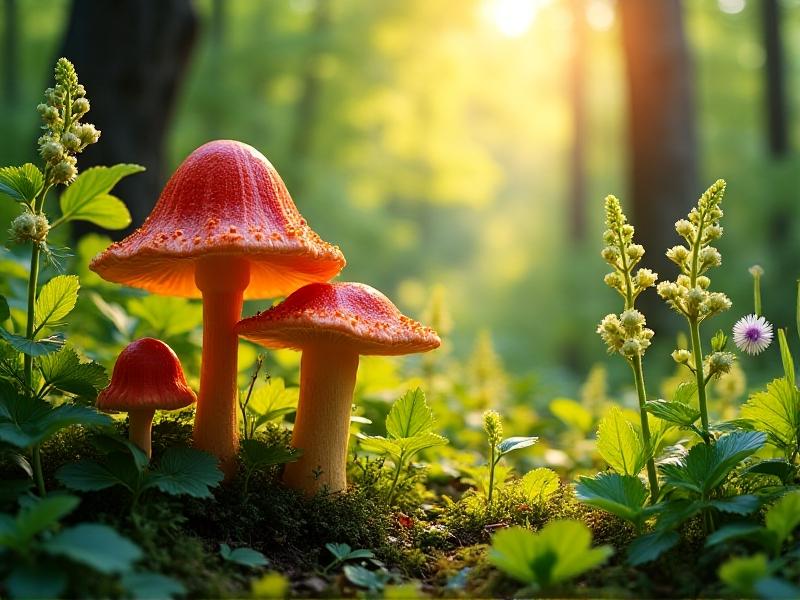Ethical Guidelines for Harvesting Medicinal Plants in Public Lands
The Importance of Ethical Harvesting of Medicinal Plants
Medicinal plants have been used for centuries to treat various ailments, offering natural remedies that are often gentler on the body than synthetic drugs. However, the increasing demand for these plants has led to overharvesting, habitat destruction, and even the extinction of certain species. Ethical harvesting practices are essential to ensure that these valuable resources remain available for future generations. By adhering to ethical guidelines, we can protect biodiversity, support local ecosystems, and promote sustainable use of medicinal plants.

Understanding the Ecological Impact of Harvesting
Harvesting medicinal plants from public lands can have significant ecological consequences. Overharvesting can deplete plant populations, disrupt ecosystems, and reduce biodiversity. It’s crucial to understand the life cycle of each plant species, including its growth rate, reproduction methods, and role in the ecosystem. For example, some plants may take years to mature, and removing them before they can reproduce can lead to population decline. Additionally, certain plants may provide food or habitat for wildlife, and their removal can have cascading effects on the entire ecosystem.

Legal Considerations and Permits
Harvesting medicinal plants on public lands is often regulated by local, state, or federal laws. These regulations are designed to protect plant populations and ensure sustainable use. Before harvesting, it’s essential to research and obtain the necessary permits. Some areas may have restrictions on the types of plants that can be harvested, the quantity that can be taken, and the methods used. Violating these regulations can result in fines or other penalties. Understanding and complying with legal requirements is a fundamental aspect of ethical harvesting.

Best Practices for Sustainable Harvesting
Sustainable harvesting involves taking only what is needed and ensuring that plant populations can regenerate. One key practice is to harvest only a small percentage of the plants in a given area, leaving the majority to continue growing and reproducing. It’s also important to use non-destructive methods, such as picking leaves or flowers rather than uprooting the entire plant. Additionally, harvesting should be done at the right time of year, when the plant is most abundant and least vulnerable. By following these best practices, we can minimize our impact on the environment and support the long-term health of plant populations.
Respecting Indigenous Knowledge and Traditions
Many medicinal plants have been used by indigenous communities for generations, and their knowledge of these plants is invaluable. When harvesting on public lands, it’s important to respect and acknowledge the traditional uses and cultural significance of these plants. This includes seeking permission from indigenous communities when appropriate and avoiding the exploitation of their knowledge for commercial gain. Ethical harvesting also involves learning from indigenous practices, which often emphasize sustainability and a deep connection to the land.
The Role of Community Involvement and Education
Community involvement and education are critical components of ethical harvesting. By raising awareness about the importance of sustainable practices, we can encourage more people to harvest responsibly. Workshops, educational programs, and community-led initiatives can help spread knowledge about the ecological impact of harvesting, legal requirements, and best practices. Engaging local communities in conservation efforts can also foster a sense of stewardship and collective responsibility for protecting medicinal plants and their habitats.
Promoting Ethical Consumption and Alternatives
As consumers, we have the power to influence the demand for medicinal plants. By choosing ethically sourced products and supporting companies that prioritize sustainability, we can help reduce the pressure on wild plant populations. Additionally, exploring alternatives such as cultivated medicinal plants or synthetic substitutes can provide sustainable options for those seeking natural remedies. Promoting ethical consumption and encouraging the development of alternatives are essential steps toward ensuring the long-term availability of medicinal plants.
Monitoring and Research for Long-Term Sustainability
Ongoing monitoring and research are essential for understanding the long-term impact of harvesting on medicinal plant populations and their ecosystems. By collecting data on plant populations, harvest rates, and ecological changes, researchers can identify trends and develop strategies to mitigate negative effects. Citizen science initiatives can also play a role in monitoring efforts, involving the public in data collection and conservation activities. Continued research and monitoring are crucial for adapting harvesting practices and ensuring the sustainability of medicinal plants for future generations.








